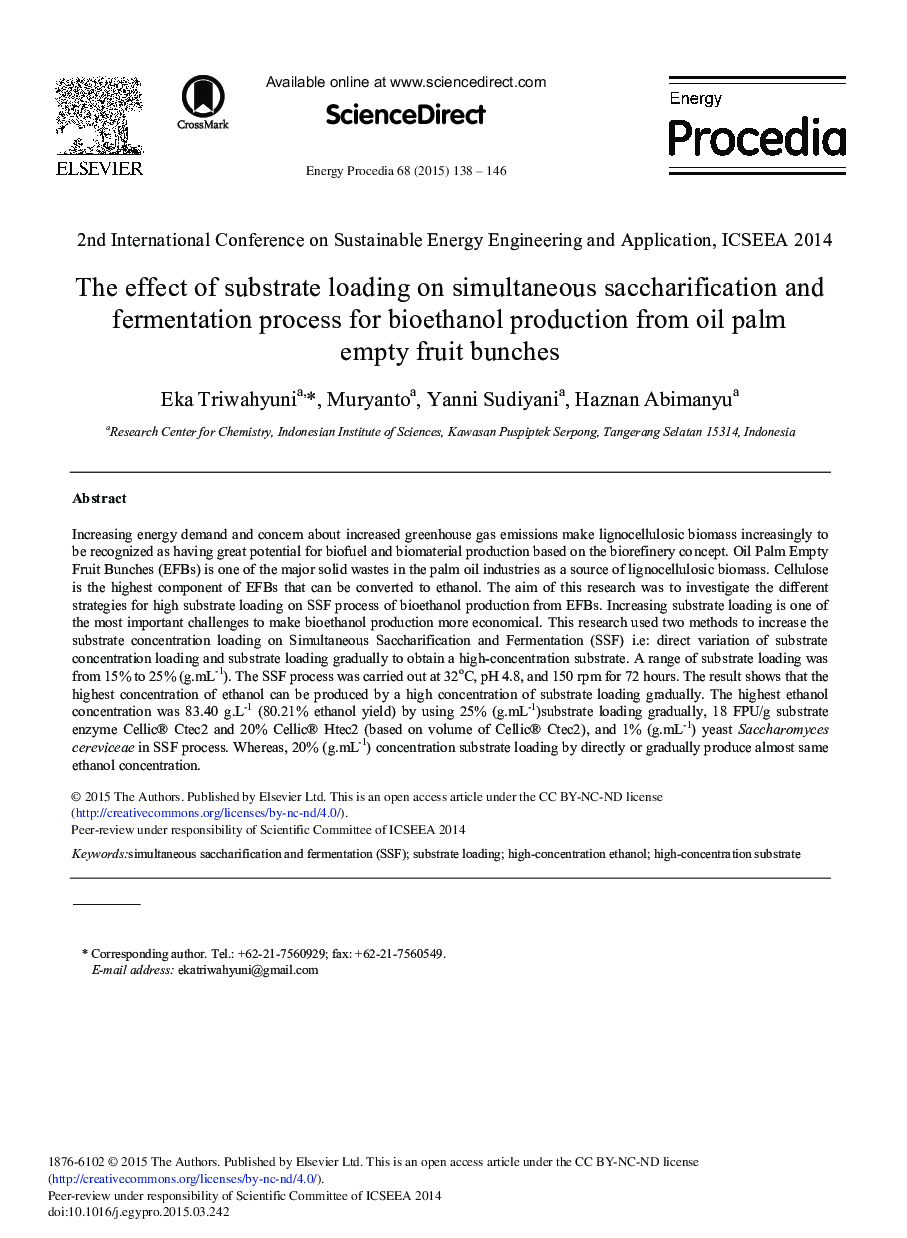| کد مقاله | کد نشریه | سال انتشار | مقاله انگلیسی | نسخه تمام متن |
|---|---|---|---|---|
| 1510389 | 1511167 | 2015 | 9 صفحه PDF | دانلود رایگان |
Increasing energy demand and concern about increased greenhouse gas emissions make lignocellulosic biomass increasingly to be recognized as having great potential for biofuel and biomaterial production based on the biorefinery concept. Oil Palm Empty Fruit Bunches (EFBs) is one of the major solid wastes in the palm oil industries as a source of lignocellulosic biomass. Cellulose is the highest component of EFBs that can be converted to ethanol. The aim of this research was to investigate the different strategies for high substrate loading on SSF process of bioethanol production from EFBs. Increasing substrate loading is one of the most important challenges to make bioethanol production more economical. This research used two methods to increase the substrate concentration loading on Simultaneous Saccharification and Fermentation (SSF) i.e: direct variation of substrate concentration loading and substrate loading gradually to obtain a high-concentration substrate. A range of substrate loading was from 15% to 25% (g.mL−1). The SSF process was carried out at 32 °C, pH 4.8, and 150 rpm for 72 hours. The result shows that the highest concentration of ethanol can be produced by a high concentration of substrate loading gradually. The highest ethanol concentration was 83.40 g.L−1 (80.21% ethanol yield) by using 25% (g.mL−1)substrate loading gradually, 18 FPU/g substrate enzyme Cellic® Ctec2 and 20% Cellic® Htec2 (based on volume of Cellic® Ctec2), and 1% (g.mL−1) yeast Saccharomyces cereviceae in SSF process. Whereas, 20% (g.mL−1) concentration substrate loading by directly or gradually produce almost same ethanol concentration.
Journal: Energy Procedia - Volume 68, April 2015, Pages 138-146
